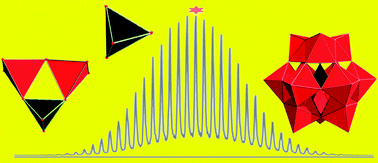Connecting theory with experiment to understand the initial nucleation steps of heteropolyoxometalate clusters†
Abstract
A complimentary combination of Density Functional Theory (DFT) methodology and Electrospray Ionization-

* Corresponding authors
a
Departament de Química Física i Inorgànica, Universitat Rovira i Virgili, c/Marcel·lí Domingo s/n, 43007, Tarragona, Spain
E-mail:
josepmaria.poblet@urv.cat
Web: http://www.quimica.urv.es/w3qf/
Fax: +34 977-559-563
Tel: +34 977-559-569
b
WestCHEM, School of Chemistry, The University of Glasgow, Glasgow, UK
E-mail:
L.Cronin@chem.gla.ac.uk
Web: http://www.croninlab.com
Fax: +44 141-330-4888
Tel: +44 141-330-6650
A complimentary combination of Density Functional Theory (DFT) methodology and Electrospray Ionization-

 Please wait while we load your content...
Something went wrong. Try again?
Please wait while we load your content...
Something went wrong. Try again?
L. Vilà-Nadal, S. G. Mitchell, A. Rodríguez-Fortea, H. N. Miras, L. Cronin and J. M. Poblet, Phys. Chem. Chem. Phys., 2011, 13, 20136 DOI: 10.1039/C1CP21209E
To request permission to reproduce material from this article, please go to the Copyright Clearance Center request page.
If you are an author contributing to an RSC publication, you do not need to request permission provided correct acknowledgement is given.
If you are the author of this article, you do not need to request permission to reproduce figures and diagrams provided correct acknowledgement is given. If you want to reproduce the whole article in a third-party publication (excluding your thesis/dissertation for which permission is not required) please go to the Copyright Clearance Center request page.
Read more about how to correctly acknowledge RSC content.
 Fetching data from CrossRef.
Fetching data from CrossRef.
This may take some time to load.
Loading related content
